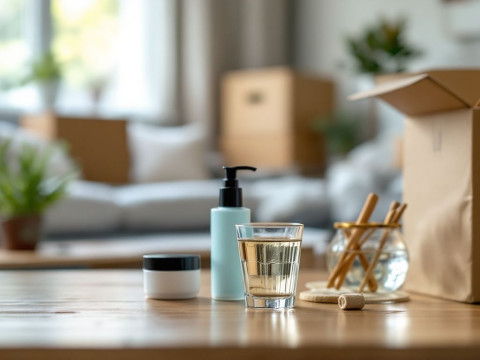Picture this: Your big TV debut is just around the corner. You’re rehearsed, your outfit is structured to perfection, and those nerves are turning into pure adrenaline. But then you catch a glimpse in a mirror – or worse, on camera – and notice your skin looking a tad dull. Yikes, right? You’re not just focusing on what you say, but how you look doing it. Skin preparation, specifically tailored for TV appearances, is where you should ramp up your focus now.
Understanding how to get your skin camera ready doesn’t need to involve dizzying complexities. Let’s break it down, keeping it chatty and easy to digest. So, cozy up with this guide full of tidbits from those in the spotlight, step-by-step breakdowns, and honest-to-goodness advice. Sounds good? Alright, let’s dive in.
Understanding TV Lighting and Its Impact on Your Skin
First off, don’t underestimate the role of studio lighting. It’s legendary for being unforgiving. The intense lights can wash out your skin, highlighting dry patches and uneven tones more than you’d like. This makes skin preparation ultra important. Seriously, it’s just as critical as script prep.
Consider stage lights not only as bright, but as magnifiers. They tend to emphasize any tiny imperfection. You wouldn’t think the cameras pick this up, but, well, they do. Ensuring that your skincare cleverly counteracts those effects is essential.
The Science Behind Skin Preparation
Good skincare is part science, part art. Trust me, these two blend beautifully when aiming for that impeccable TV appearance. Let’s talk about layering, hydration, and how exfoliation can be your enviable friend. Each plays an integral role in your pre-TV regimen and getting that visage to powerhouse territory.
Cleansing: Your Foundation
The first non-negotiable step is cleansing. You will need a clean slate. Substituting harsh, tugging strokes with a gentle, circular motion can make this process more effective. It doesn’t just remove the leftover mascara but preps your skin for the goodness it’s about to receive.

Exfoliation: Smoothing the Canvas
Exfoliation is where things can get a bit tricky yet positively rewarding. Exfoliate gently 2-3 days ahead: not too often—less is more here. Over-exfoliating could lead to irritated, red skin. Finding you’ve crossed that line is no fun prior to a camera call, so pace it out.
Hydration: Moisture is Key
Next up, hydration. Layers of serums and creams that are ultra-nourishing will see you through the drying effects of studio lights. Never skip your sunscreen though; SPF helps combat not just sunlight but also those sometimes-deceptive overhead beams, preventing an increase of additional pigmentation.
Structuring the Perfect Pre-TV Night Routine
Ah, the night before. Nervous energy may disturb your routine a bit, but winding down with skin-loving products isn’t just pampering—it’s practical prep. This routine lays the groundwork for a smooth, polished look come morning.
Step 1: Remove Makeup
Start with taking off the day’s makeup. An oil-based cleanser can dissolve stubborn layers without compromise. It’s, essentially, a great jump-off point for forthcoming layers.
Step 2: Apply a Sheet Mask
Think of sheet masks as concentrated goodness balms. Packed with serums that soak into your skin, they offer unrivaled hydration.

Step 3: Nourishing Night Creams
Wrap up with night creams formulated to soak in overnight. Choose products labeled with humectants—ingredients like glycerin or hyaluronic acid. They are stars in trapping moisture throughout those zzzs.
Avoiding Common Pitfalls in TV Skin Preparation
Even with all possible best practices in place, there might be times when skin doesn’t collaborate as expected. Here’s where people tend to trip.
Over-Experimenting with New Products
Testing out that viral product right before showtime? Maybe reconsider. New formulas could surprise your skin in unexpected ways. Instead, stick to tried-and-true pieces from your regimen.
Overloading on Makeup
Balancing makeup’s role without becoming overly reliant on it is paramount, giving that elbow room for skin-fresh glow to peek through. Yes, makeup is there to enhance—but never to overshadow unkempt prep.
Crafting a Morning Routine: Last-Minute Touches
You communicated commitment to preparation during the night; now is the pre-broadcast, fresh-face period. Just like brewing fresh coffee.

Hydrating Mist: A Burst of Freshness
Start with a gentle hydrating mist. The simple act allows for mild wakefulness while adding light dewiness.
Light-Medium Coverage Foundation
Less is more often; evening out the skin tone through a medium coverage foundation has fared well with those in the know. If in your control, opt for matte. You’ll naturally catch light diffusing glow minus unwanted shine.
Powder Strategically
Here’s a golden nugget: Use translucent powder. Patting key zones like your T-zone ensures there’s control without flattening native appeal. Nobody wants additional studio gleam straight off their forehead upon speaking engagement.
Recapping Key Approaches for Lasting Impression
Alright, we made it through the nitty-gritty. Remember that a TV appearance hinges equally on preparation and presentation.
- Adapting to Environment: Grasping lighting effects.
- Routine Structure: Reliable steps or foundational standbys.
- Consistency in Hydration: Moisture beating dryness intensifies under broadcast lighting.
- Avoid Preliminary Over-tries: Steer clear of rookie trials intensifying inflammation woes.
- 5. **Pre-look Strategies: Final dermal wins tie into broadcasting efficacy.
Every big moment encapsulates nerves offset only by reassurance and prep. Trust yourself—you are fundamentally rehearsed, inside and your skin reflected out. Work with nature; emphasize what already feels wondrous on self-exploration days. Stepping into those daunting spotlights feels instinctively warmed when complexions aren’t thoroughly off-skewed by conflicting introspective processes. Light them up showing exactly what you wanted: authentic, articulate confidence backed by skin that’s as ready for camera gliding as you are for acute question wits.
Onwards to the screen! In no time, regularity affords itself into second-nature familiarity forged from layered experiences kept handy knowledge-wise rolled vein-deep. Here’s betting odd horizons fawn impressive audibly-imminent memories thereof qualified nuanced too careful notidings suggesting mere practices meriting wan attention capacities.
Frequently Asked Questions
Why can’t I use regular soap, lotion, cream, powder, or deodorant after using Hibiclens or CHG wipes for skin preparation?
These products may interfere with the antiseptic properties of Hibiclens or CHG, decreasing their effectiveness. It is important to avoid using them after the skin preparation to ensure the antiseptic agents bind properly to the skin[3][1].
Why do I need to apply the skin preparation solution to my entire body when the surgery is only on a small area?
The microbiome is present everywhere on the skin, and applying the antiseptic solution to the entire body helps decrease the overall bacterial presence, reducing the risk of post-operative infections[3][1].
What if I experience a rash or skin irritation after using the skin preparation solution?
If you develop a rash or skin irritation, do not proceed with the second skin cleansing. Notify your doctor or the pre-operative team, as they may instruct you to use a different soap or apply the solution only to targeted areas[3][1].
Why is it important to wait for the skin preparation solution to dry before proceeding with surgery?
The solution must be allowed enough time to dry to achieve maximum antiseptic efficacy. Different solutions have varying dry times, but it is crucial to wait until the solution is completely dry before making any incisions[5][3].
References










